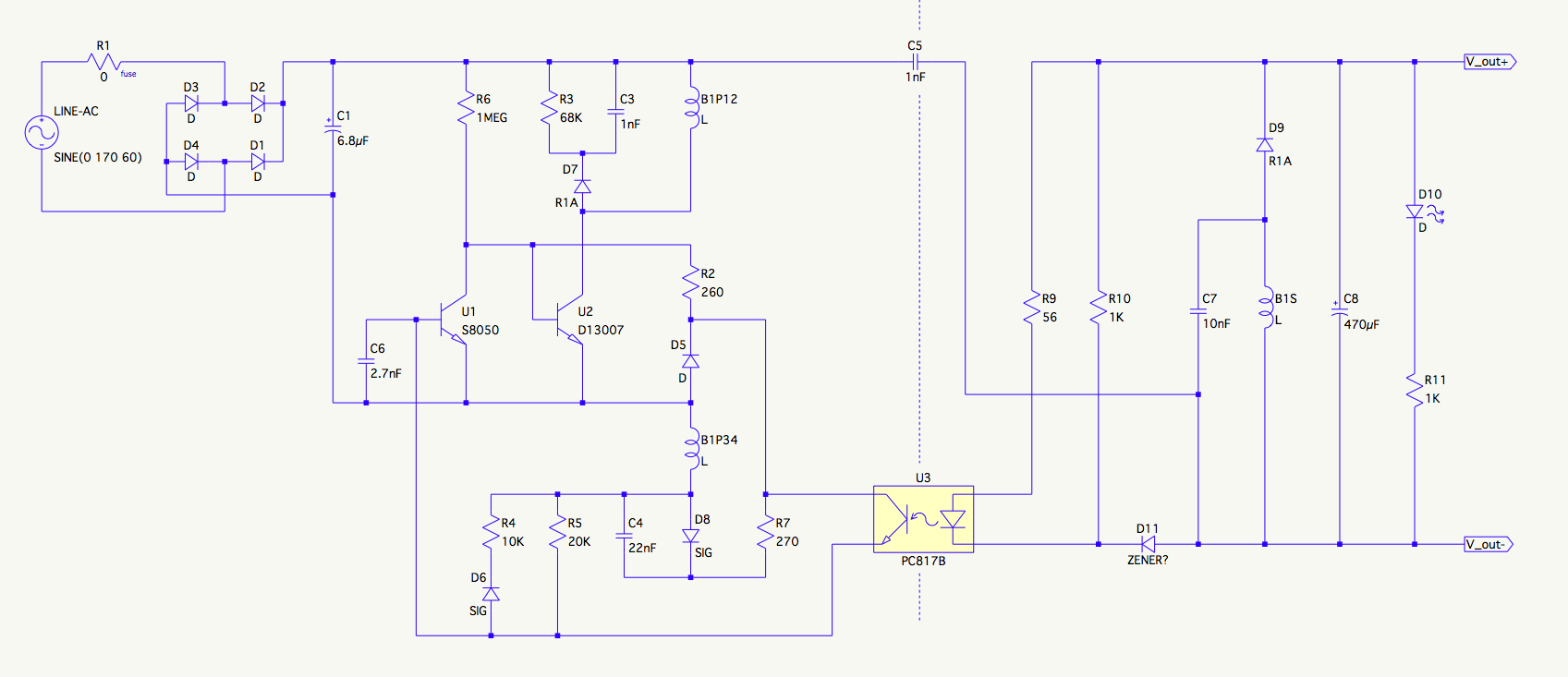I have thought about how to convert low voltage DC solar power for use inside the home. If the solar PV panels put out 24 or 48 VDC to a storage battery, the usual battery system is followed by a DC to AC inverter that puts out standard electric power, 120VAC in the USA. But the standard for low voltage power over Ethernet cable allows 48VDC at up to 15 watts to be sent over 2 pairs of a 4 pair Cat5e or Cat6 cable.
I’ve been viewing several AC to DC adapter teardowns on YouTube (Big Clive and Diode Gone Wild) and various other schematics, and the adapters are simple and are rated to work from a wide range: 85 to 250 VAC, 50 or 60 Hz. The schematic shows one that might furnish 12VDC at several watts output.
This is typical of the adapters: they have a diode full wave bridge rectifier on the incoming AC power, and a small filter capacitor rated for 400 VDC. Then the DC goes into a switching circuit that drives the primary of a small ferrite transformer. The feedback winding keeps the switch oscillating. The secondary winding is isolated from the AC line, and its AC is rectified and filtered, and sent to the 12VDC output.
The full wave bridge rectifier makes the incoming AC line inherently insensitive to polarity so it could accept DC as well as AC. It should work at full power on 120VDC, which is about what 85VAC would be after rectification and filtering (85VAC times the square root of 2). The question is what DC voltage do these power adapters stop working at? Could I get partial power from it with 48VDC applied to the power plug?
I think that if I changed some of the resistors (or put another resistor in parallel) in the circuit, it might give maybe 1/3 power with 48VDC applied to the power plug. Since it’s straight DC without any ripple, the main filter capacitor after the bridge doesn’t seem to be that critical.












